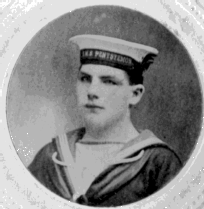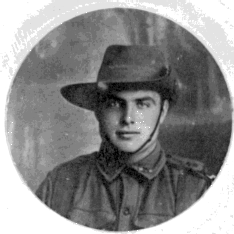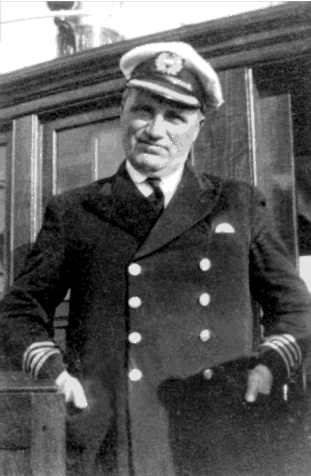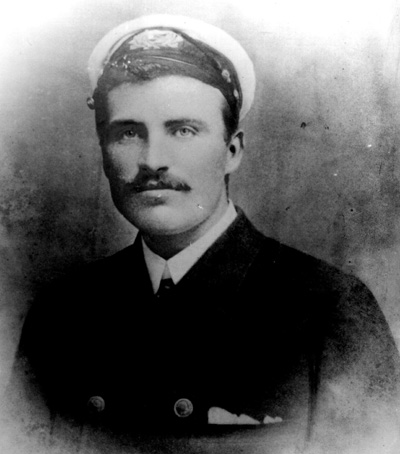
Two sons of the Sutherland Family of Windbrake, Flotta were killed in action during World War I, but the Norquay Family of Quoyness House, Flotta lost three sons during the two World Wars.

Able Seaman Adam Isbister Norquay, aged 21, of Quoyness House, Flotta died on 27th October 1917. He enrolled into the Royal Navy from the Royal Naval Reserve on 16th January 1915 at Portsmouth. When he had completed his training there, he left for Malta. He was injured on 6th October 1917 when he was aboard a torpedoed merchant ship, S.S. "Civilian", that sank while a boat crew from the sloop H.M.S. "Pentstemon" was trying to attach a towrope. Adam survived the sinking, but died while in hospital of double pneumonia on the 27th and is buried in Malta (Capuccini) Naval Cemetery.
The Orkney Herald of Wednesday, December 19, 1917 reported in its FLOTTA section: 'THE LATE SEAMAN ADAM NORQUAY - The following letter in reference to the death in hospital in Malta on 27th October, of Leading Seaman Adam Norquay, fifth son of Mr. and Mrs. Norquay, Quoyness, has been received by his mother from the commander of his ship: "HMS Pentstemon, 8/11/17. - My Dear Mrs. Norquay, - I am writing to tell you how much we all regret the loss of your son. He was one of the best men we had in the ship, being an excellent seaman, and of a cheerful and willing disposition. I especially miss him, as he was in charge of my boat, and often sailed with my wife and I when the ship was in harbour. He was one of the boat's crew who volunteered to go on board a torpedoed merchant vessel, to try to get a tow-rope to her. While aboard of her, she suddenly went down, and he was taken down with her. His life-belt was torn off him, so that he must have gone down pretty far. He became ill the same evening, and a doctor was at once sent for from another ship - we being at sea at the time. He was afterwards sent to hospital, where he had all possible attention. He was a brave boy, a model seaman in every respect, and he died for his country. - I am, Yours very truly, R.M. Kempe, Lieut.-Comr., R.N."'
Malta was a major Royal Navy base during both World Wars, but in World War I was also a major military hospital base, where over 100,000 wounded were handled and cared for. Pentstemon is a flower of the figwort family. During World War II, H.M.S. "Pentstemon" was a Flower class corvette which, with other ships and Martlet aircraft of the escort carrier H.M.S. "Audacity", sank U-131 near Madeira on 17th December 1941. During World War I, H.M.S. "Pentstemon" was a Flower class sloop displacing over 1,000 tons (equivalent to a World War II frigate), based at Malta and used on escort and patrol duties.
|
ADAM ISBISTER NORQUAY Service No.: R.N.R. 7578 / A Born: Flotta, Orkney Date of birth: 11/8/1896 Date of enrolment: 16/1/15 |
SERVICE
| Ship etc. | Detail | Rating | From | To |
| Victory | Depot, Portsmouth | Ord. Seaman | 28.1.15 | 3.3.15 |
| Himalaya | Depot Ship, Portsmouth | " | 4.3.15 | 9.2.15 |
| Victory | Depot, Portsmouth | " | 10.12.15 | 24.12.15 |
| Excellent | Gunnery School, Portsmouth | " | 27.12.15 | 28.3.16 |
| Pentstemon | Flower Class Sloop | " | 21.4.16 | 12.10.17 |
| Egmont | Malta base, (R.N. Hospital) | " | 18.10.17 | 27.10.17 |
To R.N. Hosp. Malta from "Pentstemon" 12.10.17 (Internal Injury).
21.10.17 Hurt Certificate from his being on service and a member of whaler's crew, was injured on 6.10.17 - being thrown into the sea from a sinking merchant vessel (S.S. Civilian), torpedoed by enemy submarine. He was working on board the Civilian when she suddenly went down. He had a life belt on, which was torn off his body. Afterwards he was picked up by one of the ship's boats.
Died in Malta Hospital on 27th Oct. 1917 from double pneumonia.
Next of Kin, Mother, Catherine Norquoy, Quoyness, Flotta, Orkney, covering letter sent 7.11.17.
Adam was promoted to Able Seaman while in hospital in Malta
Adam's Father, James Norquay, was paid a War Gratuity of £15-10s-0d on 14th October 1919. He was later paid the Naval Prize Money due to Adam, an interim award of £18-15s-0d on 31st January 1923, then a Supplementary Award of £2-10s-0d on 26th October 1923.
 All Australians who served overseas in World War I were volunteers.
Lance-Corporal William Isbister Norquay, whose parents James and
Catherine Norquay lived in Quoyness House, Flotta, volunteered in
Sydney, New South Wales on 2nd August 1915 and joined the 17th
Battalion, A.I.F in France. William was 26 years old, when killed in
action on 9th May 1918. His division, 2nd Australian Division, was
then holding the line in part of the old Somme battlefield. William
probably died while taking part in one of the aggressive raids made by
the Australians to gain dominance of that battlefield, then a "quiet"
sector. The Australians were masters at that kind of fighting, which
came to be known as "peaceful penetration", but was initially called
by them "prospecting". William was buried in Franvillers Communal
Cemetery Extension, Department of the Somme, France.
All Australians who served overseas in World War I were volunteers.
Lance-Corporal William Isbister Norquay, whose parents James and
Catherine Norquay lived in Quoyness House, Flotta, volunteered in
Sydney, New South Wales on 2nd August 1915 and joined the 17th
Battalion, A.I.F in France. William was 26 years old, when killed in
action on 9th May 1918. His division, 2nd Australian Division, was
then holding the line in part of the old Somme battlefield. William
probably died while taking part in one of the aggressive raids made by
the Australians to gain dominance of that battlefield, then a "quiet"
sector. The Australians were masters at that kind of fighting, which
came to be known as "peaceful penetration", but was initially called
by them "prospecting". William was buried in Franvillers Communal
Cemetery Extension, Department of the Somme, France.

|
James Gunn Norquay was an older brother of Adam and
William Norquay of Quoyness, Flotta, who died during
World War I. James also served in that conflict, when as
a member of the Royal Naval Reserve he was
commanding officer of a ship on patrol duty in the North
Sea. In early World War II, James served as a Captain
with the North of Scotland, Orkney & Shetland Steam
Navigation Co.
One of the North Company's ships, Highlander, was attacked near Aberdeen on 2nd August 1940 by German bombers, two of which the crew managed to shoot down. This was widely reported in the press and on the radio, so the Luftwaffe was determined to take revenge on the ship. She was attacked again on the 13th and 18th-19th September, so her name had been changed to St. Catherine II when German aircraft attacked the ship after leaving Aberdeen on 14th November. Her luck had then run out and Captain James Norquay, thirteen of his crew and one passenger went down with the ship, while fourteen of the crew and three passengers were rescued. |

A much younger James Norquay photographed before the Great War - courtesy of his neice, Sally Banks. |
Return to WWI The Maritime War
Return to WWI Archive main page.